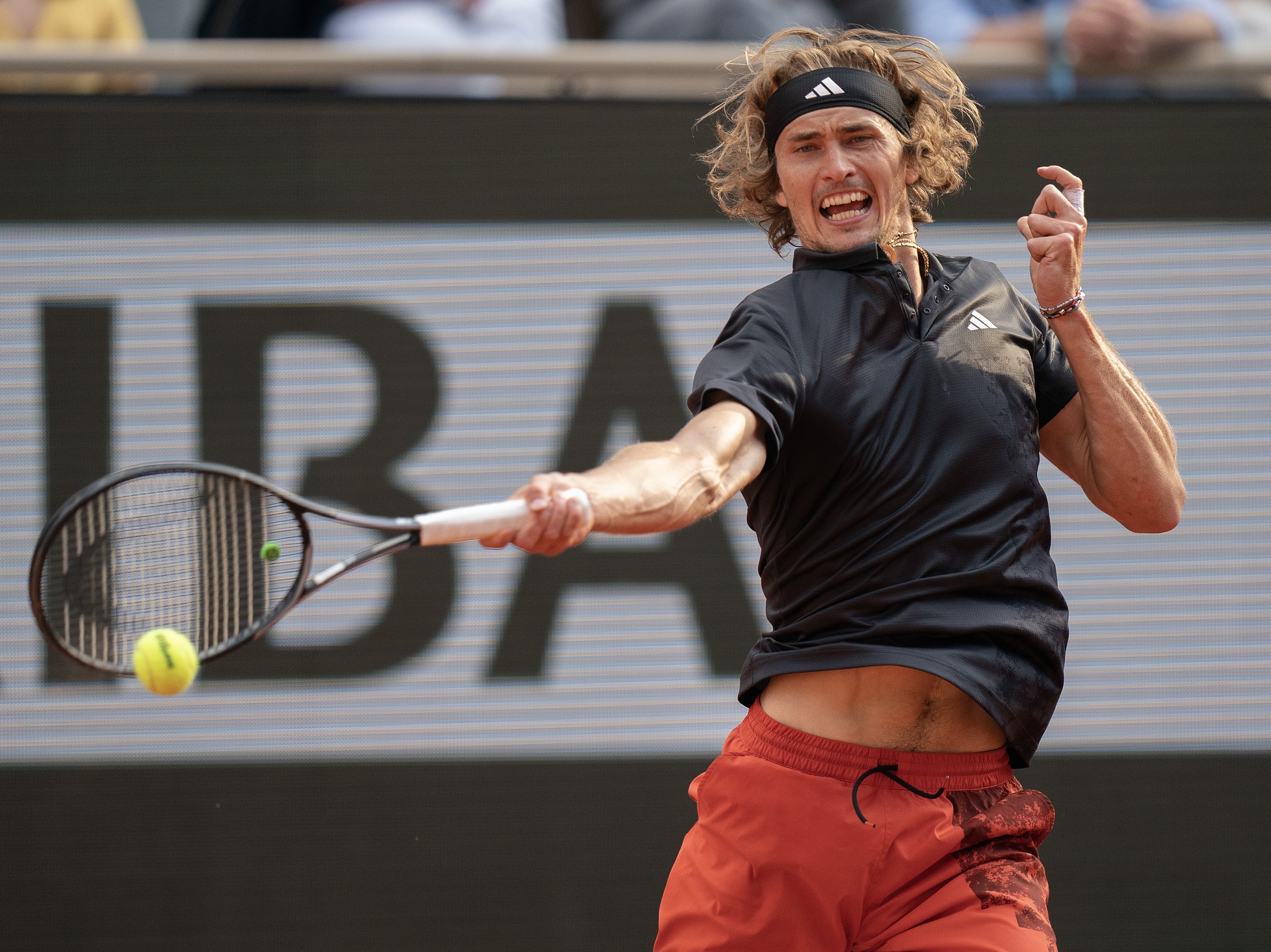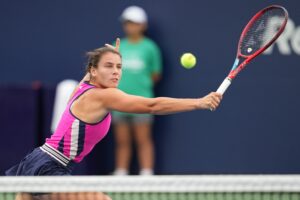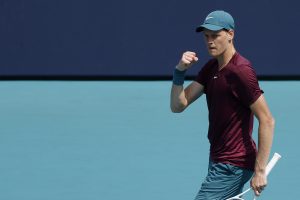2020 US Open finalist Alexander Zverev made a statement with his five-set victory against Jannik Sinner. Not many before the tournament began picked the German as the most likely to challenge Carlos Alcaraz or Novak Djokovic at Flushing Meadows. But the 26-year-old reminded the tennis world of just how good he can be to reach the quarterfinal and set a date with defending champion Carlos Alcaraz.
Sinner is a terrific player, and a probable future Grand Slam champion, making Zverev’s triumph over him an extremely impressive one. However, the challenge is likely to be even stiffer against the Wimbledon champion. Can Zverev seriously trouble Alcaraz at the US Open? This article gives four things he must do to have a chance.
How Alexander Zverev Can Trouble Carlos Alcaraz
1. The Importance of First and Second Serves
Zverev will need to hit his spots on his first serve as well as he ever has to gain free points. Alcaraz has won the most first-serve return points on the ATP Tour in 2023. On hard courts specifically, he is third on the list, very narrowly below first and second. Zverev has undoubtedly had a good tournament so far. However, his serve is the shot that has fluctuated the most in quality by his high standards. An example was when he got broken five times in the second round by countryman Daniel Altmaier. It did improve against Sinner, and will need to get even better against the Spaniard to get crucial cheap points.
The second serve is the weakest part of the Zverev game, and how he protects that shot is a pivotal element of this matchup. The five-time Masters 1000 champion has a recurring issue of double faulting behind his second delivery. Interestingly, Alcaraz is down at 17th on the list in 2023 for points won on second-serve return on hard courts, prevailing in slightly more than half of the points played. This indicates that Zverev should avoid the temptation to go for extra on his second serve because of the caliber of Alcaraz.
I am not advocating rolling the ball in at an overly slow and attackable pace. But evidence indicates that Zverev has a chance of winning a reasonable share of second-serve points if he gets it in at his natural pace. The priority needs to be avoiding costly double faults in this US Open battle.
2. Not Being Afraid of the Net
Volleying is certainly not the strongest part of the Zverev game. I am not suggesting that rushes to the net should be used as a primary tactic throughout the match. But it is so important to not allow Alcaraz to get into a rhythm. That means avoiding a one-dimensional style that allows the 20-year-old to get into the zone. It is undoubtedly tempting for Zverev to stick rigidly with his baseline-oriented game that has brought so much success. And that style did bring a win against the two-time Grand Slam champion at the French Open last year.
Yet the recent Cincinnati finalist has developed exponentially since that match. What worked on a clay court last year is very unlikely to work against a much improved Alcaraz on a hard court in 2023. Zverev is a better volleyer than many realize. Throwing in the occasional serve and volley can prevent the young star from gaining the rhythm that makes him so deadly with his first serve return.
Opponents have troubled Alcaraz by serving and volleying. Max Purcell came close to upsetting him in Cincinnati with a pure serve and volley style. Also, Hubert Hurkacz twice came even closer to beating Alcaraz recently. The Pole did not serve and volley every point, but used it smartly to leave the Spaniard guessing.
3. Changing Direction at the Right Moments
Tommy Paul upset Alcaraz in Toronto and came close to doing so again in Cincinnati. The American stuck rigidly to a plan of hitting the ball cross-court off both wings, not allowing a clear target for Alcaraz to hit into that may form if he went up the line. Paul has a very different game to the Olympic champion. Hence it is not a strategy Zverev should implement. This is particularly true off his backhand. Alcaraz undoubtedly has one of the best backhands in tennis. But I believe that at his best, Zverev has the best backhand in the game alongside Novak Djokovic. His long injury layoff makes some forget how truly devastating he can be off that wing, such as when he utterly dominated Djokovic in backhand-to-backhand rallies in the semifinal of the Olympic Games.
That is why Zverev should back himself on that side. Admittedly, going down the line to the devastating Alcaraz forehand is a risk. But it is one worth taking. If the German senses an opportunity of a winner by going down the line in a rally, it is wise to be more positive in this matchup than against lesser opponents, who are more likely to eventually make an unforced error if Zverev bides his time.
4. Keeping the Rallies Short When Possible
This is an important final point, and it links into much that I have already said. Zverev’s five-set US Open battle against Sinner was incredibly intense, and the 26-year-old was visibly and understandably exhausted in the final set despite emerging victorious. It seems very likely that Alcaraz will have a physical advantage. That is even more probable since Zverev returned from close to a year away from professional tennis this season after a terrible injury sustained at the French Open. He has certainly worked very hard to return to a high level. However, regaining all the physical endurance lost after a big injury can take a considerable period of time.
Hence Zverev needs to seek quicker points where it is feasible. He can do that with the insight given in this article. Serving well to get as many cheap points as possible. Occasional trips to the net are a very effective way of shortening rallies. And looking to change direction to devastating effect off his backhand in particular to get more winners and forced errors from Alcaraz lessens the length of the rallies. It is only off his second serve that it would be unwise to be very aggressive.
Main Photo Credit: Susan Mullane – USA TODAY Sports





